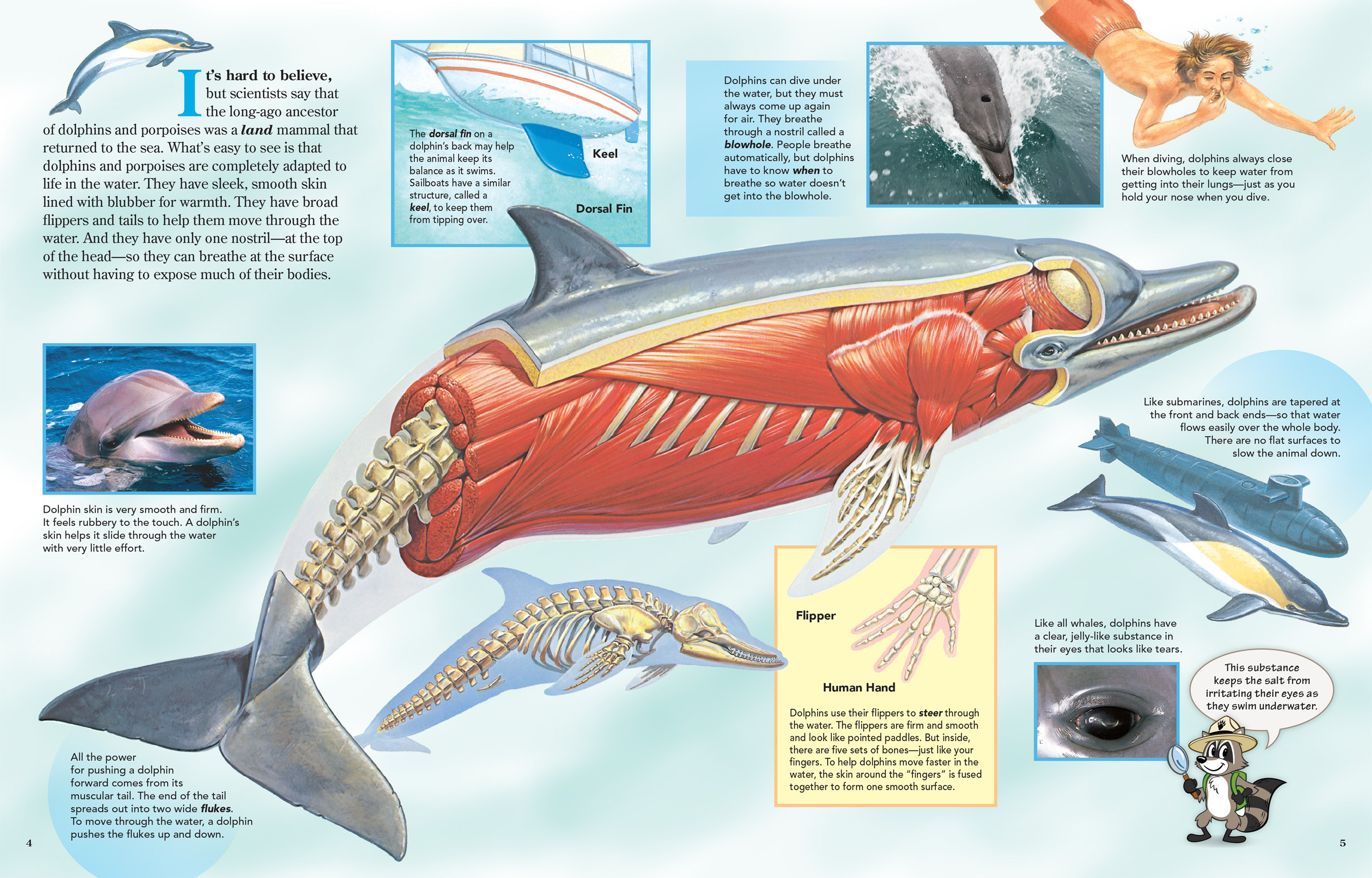
At Home in the Sea
ByIt’s hard to believe, but scientists say that the long-ago ancestor of dolphins and porpoises was a land mammal that returned to the sea. What’s easy to see is that dolphins and porpoises are completely adapted to life in the water. They have sleek, smooth skin lined with blubber for warmth. They have broad flippers and tails to help them move through the water. And they have only one nostril—at the top of the head—so they can breathe at the surface without having to expose much of their bodies.
The dorsal fin on a dolphin’s back may help the animal keep its balance as it swims. Sailboats have a similar structure, called a keel, to keep them from tipping over.
Dolphin skin is very smooth and firm. It feels rubbery to the touch. A dolphin’s skin helps it slide through the water with very little effort.
All the power for pushing a dolphin forward comes from its muscular tail. The end of the tail spreads out into two wide flukes. To move through the water, a dolphin pushes the flukes up and down.
Like submarines, dolphins are tapered at the front and back ends—so that water flows easily over the whole body. There are no flat surfaces to slow the animal down.
Dolphins can dive under the water, but they must always come up again for air. They breathe through a nostril called a blowhole. People breathe automatically, but dolphins have to know when to breathe so water doesn’t get into the blowhole.
When diving, dolphins always close their blowholes to keep water from getting into their lungs—just as you hold your nose when you dive.
Like all whales, dolphins have a clear, jelly-like substance in their eyes that looks like tears. This substance keeps the salt from irritating their eyes as they swim underwater.
Dolphins use their flippers to steer through the water. The flippers are firm and smooth and look like pointed paddles. But inside, there are five sets of bones—just like your fingers. To help dolphins move faster in the water, the skin around the “fingers” is fused together to form one smooth surface.

